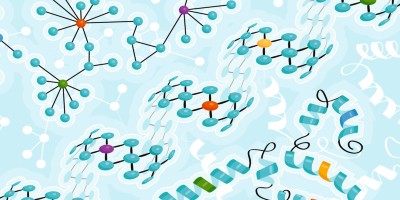Abstract
Conrad Hal Waddington was a leading embryologist and geneticist from the 1930s to the 1950s. He is remembered mainly for his concepts of the 'epigenetic landscape' and 'genetic assimilation'. This article reviews his life and work, and enquires to what extent his ideas are relevant tools for understanding the biological problems of today.




References
Robertson, A. Conrad Hal Waddington 8 November 1905–26 September 1975. Biogr. Mem. Fellows R. Soc. 23, 575–622 (1977).
Waddington, C. H. in Towards a Theoretical Biology Vol. 2, 72–81 (Edinburgh Univ. Press, UK, 1969).
Spemann, H. & Mangold, H. Über Induktion von Embryonenanlagen durch Implantation artfremder Organisatoren. Arch. Microsk. Anat. EntwMech. 100, 599–638 (1924).
Waddington, C. H. Experiments on the development of chick and duck embryos cultivated in vitro. Phil. Trans. R. Soc. Lond. B Biol. Sci. 221, 179–230 (1932).
Waddington, C. H. Experiments on determination in the rabbit embryo. Arch. Biol. 48, 273–290 (1937).
Bautzmann, H., Holtfreter, J., Spemann, H. & Mangold, O. Versuche zur Analyse der Induktionsmittel in der Embryonalentwicklung. Naturwissenschaften 20, 971–974 (1932).
Witkowski, J. A. Optimistic analysis — chemical embryology in Cambridge 1920–42. Med. Hist. 31, 247–268 (1987).
Dalcq, A. & Pasteels, J. Une conception nouvelle des bases physiologique de la morphogénèse. Arch. Biol. 48, 669–710 (1937).
Waddington, C. H., Needham, J. & Needham, D. M. Studies on the nature of the amphibian organisation centre. I. Chemical properties of the evocator. Proc. R. Soc. Lond. B Biol. Sci. 117, 289–310 (1935).
Waddington, C. H., Needham, J. & Brachet, J. Studies on the nature of the amphibian organisation centre. III. The activation of the evocator. Proc. R. Soc. Lond. B Biol. Sci. 120, 173–198 (1936).
Slack, J. M. W. Inducing factors in Xenopus early embryos. Curr. Biol. 4, 116–126 (1994).
Waddington, C. H. Organisers and Genes (Cambridge Univ. Press, UK, 1940).
Waddington, C. H. The Strategy of the Genes (Geo Allen & Unwin, London, 1957).
Medvedev, R. The Rise and Fall of T. D. Lysenko (Columbia Univ. Press, New York, 1969).
Waddington, C. H. Canalization of development and the inheritance of acquired characters. Nature 150, 563–565 (1942).
Waddington, C. H. Selection of the genetic basis for an acquired character. Nature 169, 278 (1952).
Waddington, C. H. (ed.) Towards a Theoretical Biology Vols 1–4 (Edinburgh Univ. Press, UK, 1968–1972).
Wolpert, L. Positional information and the spatial pattern of cellular differentiation. J. Theor. Biol. 25, 1–47 (1969).
Thom, R. Structural Stability and Morphogenesis (Benjamin, Reading, Massachusetts, 1975).
Waddington, C. H. Principles of Embryology (Cambridge Univ. Press, UK, 1956).
Thomas, R. Boolean formalisation of genetic control circuits. J. Theor. Biol. 42, 563–585 (1973).
Acknowledgements
I am grateful to A. McLaren, C. Stern and L. Wolpert for comments on the manuscript, but I know they do not necessarily agree with all my statements.
Author information
Authors and Affiliations
Related links
Rights and permissions
About this article
Cite this article
Slack, J. Conrad Hal Waddington: the last Renaissance biologist?. Nat Rev Genet 3, 889–895 (2002). https://doi.org/10.1038/nrg933
Issue Date:
DOI: https://doi.org/10.1038/nrg933
- Springer Nature Limited
This article is cited by
-
Programmed and self-organized flow of information during morphogenesis
Nature Reviews Molecular Cell Biology (2021)
-
Epigenetic studies and pediatric research
Pediatric Research (2020)
-
Control of Intracellular Molecular Networks Using Algebraic Methods
Bulletin of Mathematical Biology (2020)
-
Epigenetic Molecular Mechanisms in Insects
Neotropical Entomology (2020)
-
The role of histone modifications in leukemogenesis
Journal of Biosciences (2020)


